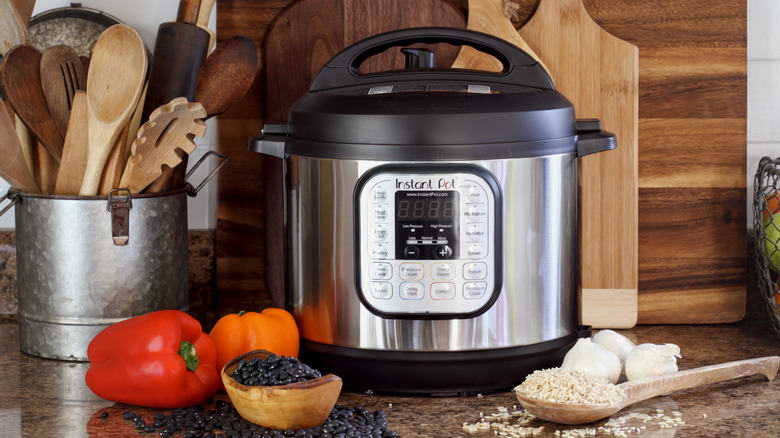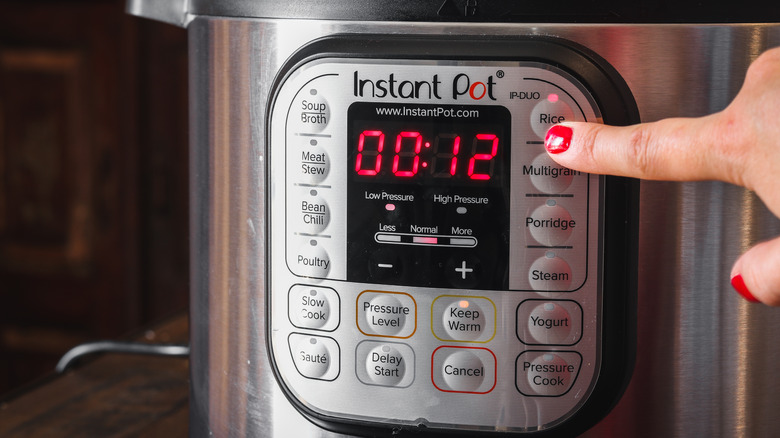Why Instant Pots Cook Food More Slowly At Higher Altitudes
Instant Pots have developed a passionate following since their debut on the market nearly 12 years ago (via CNBC). Today, there are more than 3 million active followers on the Instant Pot Community Facebook page, and new guides and recipes are constantly being released for the multi-use pressure cooker that can seemingly do it all.
Even something this wonderful has its limits though. Some home cooks have found that Instant Pots and other pressure cookers do not perform as well when used at higher elevations. Tim and Laurie Bratten of the High Country Living blog were surprised to find that pressure cooking and slow cooking with their Instant Pot wasn't working as advertised for them. They found that some recipes needed longer cooking times, or were burning. It turned out to be the consequences of living at roughly 9,000 feet above sea level at their ranch in Guffey, Colorado.
But folks living in the high country of the Western United States can still get on board with the Instant Pot craze, they just might have to make some adjustments.
How elevation affects Instant Pot cooking times
The issue with using an Instant Pot at higher elevations is the same reason why they are so beloved. According to Well and Good, the multi-cooker has become well loved for its pressurized cooking process that decreases cooking times. Stews, roasts, and grains can all be cooked in relatively quick times compared to other non-pressurized alternatives.
Differences in atmospheric pressure are also what gives the Instant Pot trouble at higher altitudes. According to Hip Cooking, the natural atmospheric pressure at sea level is usually around 14.7 psi. The typical pressure cooker adds a maximum of roughly 15 psi to the cooking chamber to help food cook faster. At higher altitudes it is still adding that same amount of pressure, but it is starting from a lower atmospheric pressure. At 9,000 feet above sea level, where the Brattens live, their atmospheric pressure is around 10.5 psi. According to High Country Living, that difference adds 35% more cooking time to every recipe they attempt.
The different atmospheric pressure also causes water to boil and evaporate more quickly (via Science ABC). This causes foods meant to sauté or simmer to often burn and boil instead. High Country Living found the Instant Pot Ultra to have the best features to make cooking adjustments, and Health Instant Pot Recipes shared a timetable for adjusted cooking times.

